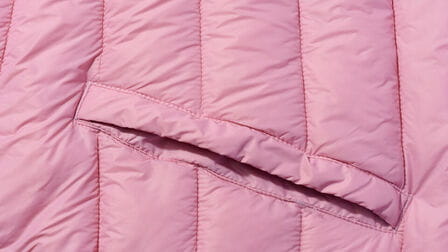The fast fashion industry has revolutionized the way we shop and dress. With new trends coming out weekly at affordable prices, it's easy to get caught up buying the latest styles. However, there is a dark side to fast fashion that many consumers are unaware of. In this article, we will dive deeper into the ethical and sustainability issues within the fast fashion industry.
The Environmental Impact
Fast fashion depends on high production and quick turnover of inventory. However, this rapid production comes at a high environmental cost.
Greenhouse Gas Emissions
- The fashion industry accounts for 8-10% of global carbon emissions, more than all international flights and maritime shipping combined. Manufacturing synthetic fibers like polyester and nylon emits nitrous oxide, a greenhouse gas 300 times more potent than carbon dioxide.
- Fast fashion encourages overproduction and overconsumption, demanding large amounts of raw materials, factory production, and transportation around the globe. All these processes result in high greenhouse gas emissions.
- Popular fast fashion brands like Zara, H&M, and Forever21 ranked among the highest companies for greenhouse gas emissions, due to their global networks of factory production and international shipping.

Water Pollution
- Textile dyeing and treatment generate a high volume of toxic wastewater polluting rivers and streams in manufacturing countries.
- About 20% of industrial water pollution comes from textile dyeing and treatment. This wastewater contains toxic substances like lead, mercury, arsenic and high pH.
- Developing countries with lax environmental regulations often house most fast fashion manufacturing. As a result, nearby communities bear the brunt of poor water quality.
Labor Exploitation
Behind the affordable clothing tags lie institutional labor exploitation and abuse.
Child Labor
- Estimates indicate over 170 million children engaged in child labor worldwide, with many working in the garment and textile industry.
- Impoverished families across production countries like Bangladesh, Myanmar and India have relied on children's wages for generational income. Trafficking of underage children into factories still persists today.
- Some fast fashion supply chains subcontract production to small factories with little oversight. These production houses frequently exploit child labor in hazardous sweatshop environments.

Low Wages & Unsafe Working Conditions
- Garment workers in fast fashion supply chains notoriously face extreme poverty wages, forcing them into a cycle of debt and poverty.
- Bangladesh is an epicenter of the fast fashion industry with over 4 million garment workers. Yet almost half the population lives below the national poverty line.
- Factories with inadequate investment in safety and infrastructure pose dangerous risks to workers. Since 2005, over 500 garment workers have died in factory fires or building collapses in Bangladesh alone with thousands more injured.
Culture of Excess
Fast fashion has created a distorted relationship between clothing and needs - fueling a culture of disposability and overconsumption.
Perceived Obsolescence
- Fast fashion relies on fabricating consumer needs to drive profits, introducing thousands of new "must-have" items every week.
- Clothing has transformed from a basic necessity into a rapidly expiring commodity. The average consumer buys 60% more items of clothing and keeps them for about half as long compared to 15 years ago.
- Campaigns like Fashion Revolution help educate consumers about the exploitative systems used to manufacture cheap fast fashion. However, convenience and affordability continue overshadowing ethical purchasing decisions.
Waste & Pollution
- With more clothing churning through closets faster, the rise of fast fashion drives an exponential increase in textile waste. In the US alone, over 85% of discarded clothing ends up incinerated or landfilled every year.
- As natural fibers like cotton decompose, they release potent greenhouse gases like methane and CO2 contributing to global emissions. Manmade fibers may take centuries to biodegrade, leaching microplastics into landfill sites and oceans.
- Campaigns like Fashion Revolution help educate consumers about the exploitative systems used to manufacture cheap fast fashion. However, convenience and affordability continue overshadowing ethical purchasing decisions.
The Future of Sustainable Fashion
While the fast fashion business model has caused exponential damage, a sustainable future for fashion lies ahead through collective action across the industry.
Policy & Transparency
- Strengthening environmental regulations and labor laws in manufacturing countries ensures accountability across fashion supply chains.
- Mandating supply chain transparency presses brands to address risks of exploitation, pollution and emissions in their production.
- Multi-stakeholder initiatives like the UN Alliance for Sustainable Fashion provide guidance for coordinated action between policymakers, businesses and consumers.
Innovation & Technology
- Developing and scaling innovative solutions reduces fashion's planetary footprint across dyeing, production and manufacturing stages.
- Investment in new fabrics from renewables like algae and pineapple leather creates fashion with lower environmental impact.
- Retailers apply technology for advanced demand forecasting and inventory optimization to mitigate overproduction and waste.

Circular Business Models
- Transitioning from a linear take-make-waste model, circular business models extend the lifecycle of clothing.
- Rental and resale platforms like Rent the Runway and ThredUp reuse garments between consumers.
- Made-to-order production methods cut overproduction and waste by only manufacturing an item once a customer orders it.
Sustainable fashion offers hope for transforming relationships with clothing toward more ethical and considered consumption. However, as individual consumers, the most meaningful impact we can make is to critically examine our own buying habits. Prioritizing quality over quantity, embracing circularity, and holding brands accountable for their practices provokes radical change within the fashion industry.
Conclusion
Fast fashion delivers substantial profit for brands but disguises steep environmental and social costs. Its rapid growth has created a distorted relationship with clothing, overflowing landfills and amplifying the impacts of climate change. However, through coordinated efforts across policies, technological innovation and circular business models, a greener future lies ahead. As individuals, we hold responsibility through our consumption choices and by demanding transparency from the brands who make our clothes. The road to establishing an ethical fashion industry remains long, but these small steps of conscious consumerism and industry reform set the course.















